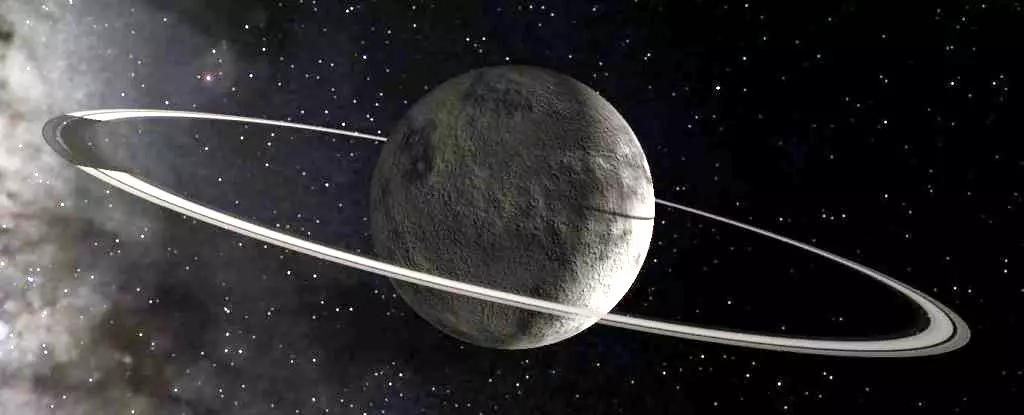Far beyond the orbit of Jupiter, hidden amongst the icy bodies of our solar system, lies Chiron—a celestial entity that defies conventional categorization. Classified as a centaur, its unique characteristics set it apart from its celestial counterparts. Recent observations made by the James Webb Space Telescope (JWST) have illuminated Chiron in ways previously unimaginable, revealing its peculiarities and spurring a flurry of scientific inquiries. This article delves into the uncanny features of Chiron, exploring its comet-like behavior, potential debris field, and the implications of its distinct chemical makeup.
Centaurs are a fascinating category of objects that inhabit the space between Jupiter and Neptune. They orbit the Sun in intricate patterns, often crossing the paths of larger planets. These bodies are primarily composed of a mix of water ice, rocky material, and other compounds, resulting in a complex interplay of properties. Chiron is particularly intriguing; it exhibits both asteroid-like and comet-like traits. This duality has raised eyebrows among planetary scientists, as it implies that these objects are not merely remnants left from the solar system’s evolution, but active players in an ongoing cosmic narrative.
The Challenges of Observing Chiron
Investigating celestial bodies like Chiron presents significant challenges. Its great distance from Earth complicates efforts to gather detailed information, as traditional telescopes often struggle to resolve objects so far away. However, with the advent of the JWST, researchers are gaining unprecedented access to the chemical and physical characteristics of these distant objects. Led by Noemí Pinilla-Alonso of the University of Oviedo, a dedicated team aimed to decode the mystery that Chiron embodies. By employing the powerful observational capabilities of the JWST, they sought to uncover the secrets hidden within Chiron’s surface and its surrounding coma—much akin to the atmosphere of a comet.
Chiron’s active nature includes periodic ejections of gas and dust, mimicking the behavior of comets. The team utilized JWST’s advanced near-infrared spectroscopy techniques to examine the spectral signatures emitted by Chiron’s coma. This examination revealed a variety of significant chemical compounds: carbon dioxide, carbon monoxide, ethane, propane, acetylene, methane, and water ice. The discovery of ample methane is particularly noteworthy, hinting at the complex geochemical processes taking place on and around Chiron.
Understanding the composition of the gases within the coma in conjunction with those on the surface enhances our grasp of Chiron’s physical and chemical characteristics. Delving into the thickness, porosity, and composition of the ice layer could elucidate how solar radiation alters these materials over time. Such insights are invaluable as they provide a glimpse into the solar system’s nascent conditions when it first formed, allowing scientists to reconstruct a piece of its ancient history.
Researchers believe that centaurs like Chiron originated from a distant region populated with trans-Neptunian objects (TNOs). TNOs are thought to remain largely untouched since the solar system’s inception, preserving the primordial materials that formed it. As these objects venture closer to the Sun, they experience sublimation—where ice transforms directly into gas—leading to the release of materials that can provide clues about the solar system’s early composition.
The analysis of compounds such as methane and water ice indicates that Chiron may retain a bounty of ancient materials inherited from the solar system’s birth. Furthermore, the presence of compounds like ethane and propane could imply that these have formed through chemical reactions occurring on Chiron’s surface over time—essentially a form of cosmic “rusting.” Pinilla-Alonso’s assertion that no standard centaur exists invites speculation about the underlying processes that govern these objects’ activities.
The Future of Chiron Research
The tantalizing discoveries surrounding Chiron have only heightened scientific curiosity, prompting researchers to plan continuous observations as the centaur gradually moves closer to our vantage point on Earth. By examining how Chiron alters over time and with seasonal changes, scientists hope to uncover more about its evolution and the enigmatic mechanisms driving its unique behavior.
Chiron represents a microcosm of the solar system’s history and offers an unparalleled chance to study the ongoing transformations of celestial objects. With each observation, we draw nearer to understanding not only Chiron but the evolutionary timeline of our solar system itself—a journey that continues to fascinate astronomers and enthusiasts alike.

